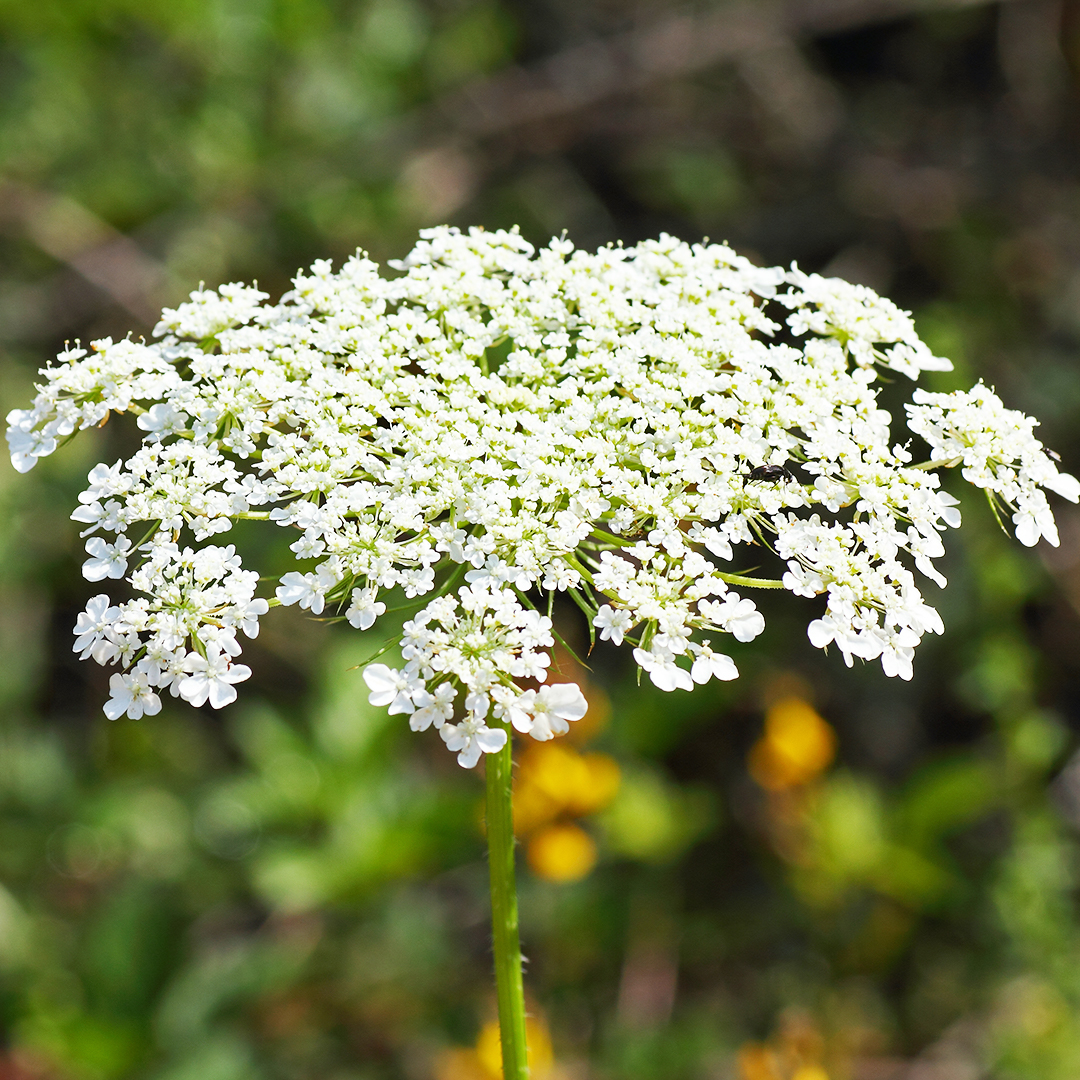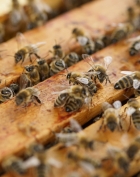Wild Carrot
Daucus carota
Best Time to See: June, July, August
Habitat: Grassland
Colour: Red, White
Also known as Queen Anne's lace this is a dainty, frothy wildflower with a single red bloom in its centre.
Unlike cultivated carrots, the wild carrot's root is tough and stringy and not particularly palatable.
The flower itself is long stalked and shaped like an up-turned umbrella. It is similar in appearance to other members of the Apiacae or 'umbellifer' family - such as the highly poisonous hemlock and the commonly seen cow parsley - with white flowers and feathery leaves.
However, the foliage of wild carrot is a mix of 'bipinnate' (leaves where the feathers are feathered themselves) and tripinnate (leaves where the feathers on the feathers are feathered!), a root that smells of carrots, a hairy stem and occasionally a single red flower in the centre.
Habitat and distribution
Found throughout the UK. In Scotland mainly occurs on the coast. Wild carrot can be often be found growing on grassland, cliffs, roadsides and in hedge banks.
Did you know?
- The popular orange carrot we eat today was developed by the Dutch in the 17th century. It was first noted as being grown in the UK in Somerset in 1668.
- There are several stories as to why the wild version is named 'Queen Anne's lace'. Most revolve around King James I's consort - the Queen Anne in question - who is said to have pricked her finger and stained some lace with a drop of blood. Wild carrot's single red flower surrounded by frothy white blossom is quite evocative of this tale.

